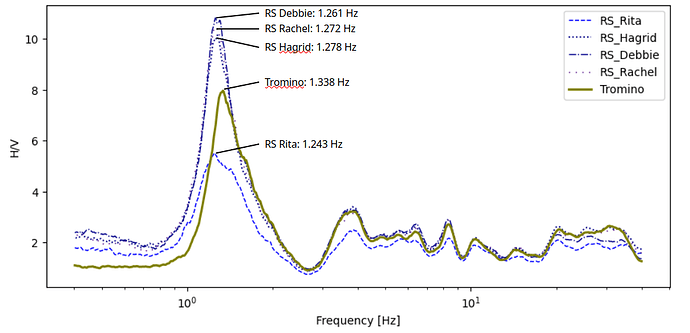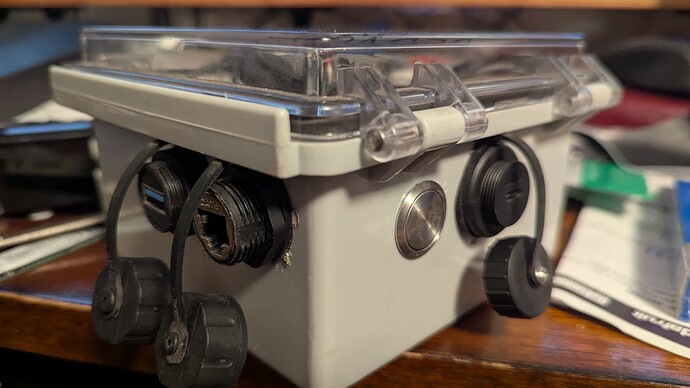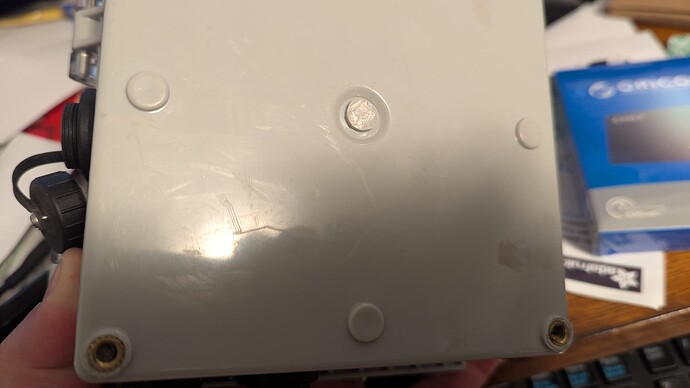Just sharing some work I’ve been doing to make the shake a little more portable. I have been experimenting with using the Shake 3D as a portable seismometer to collect data for HVSR analysis, primarily for bedrock characterization. See here for more info.
Our main RS3D system right now uses the outdoor turnkey with a converter a colleague added on to go from a 12v battery to 5v input. However, I have also been experimenting with making something completely self-contained, and have had some limited success. I am going to describe what I’ve done below a) to potentially get some input for improvement and b) to document this so I don’t forget later ![]()
Materials I’ve used:
- RS3D DIY Kit
- Zulkit 5.9"x5.9"x3.9" Hinged Junction box (for ease of access since I’m still figuring this out)
- Sunfounder pipower
- Some ip65/7 panel ports (1x USB, 1x ethernet, 1x usb-c power, and 1x power switch)
- I don’t remember if those are the exact products
- The power switch and power cable both go to the pipower (switch is soldered to the switch pin and ground w/resistor)
- 4x heat-insert nuts (usually for 3d printing) and threaded legs/feet
- Laser cut a bottom plate (thanks to my local library’s laser cutter!), see image below (also had to get a thread tap/die from the hardware store)
This certainly is not a perfect setup, but it has worked ok. See chart below for a quick comparison and see Tinkercad model of the setup
From what I can tell of the drawbacks or things to be improved upon so far:
- Generally this is all “prototype” level of craftsmanship and materials, so all around could probably improve on things
- Not sure if/how much the power supply is interfering. Any additional noise seems to be more a matter of poor craftsmanship on my part than anything inherent to the system.
- I currently have just mounted with battery to an empty location on the bottom plate with velcro…this is probably not ideal
- The specific junction box has a lot of benefits, but does not have a great place for mounting the feet, so the feet are not very deeply inserted into the box (probably reduces the quality of the ground coupling). Having a plate like what’s on the Outdoor turnkey system would probably help.
- Battery life is a little over 5 hours in ideal conditions (less in the field).
- We usually do 30 minute sites, and with a USB-C charger it can be charged relatively easily in the car.
Pros:
- Though slightly larger than the proprietary seismometer, this unit is about as portable and faster to deploy
- The external ports are much easier to work with than the IP67 turnkey when unplugging and plugging a lot.
We were actually able to do a comparison of four Shakes and a proprietary seismometer called the Tromino (which is probably the industry leader for HVSR acquisition), at the same site at the same time. The chart below shows some of that (we gave the shakes names so we could identify which was which…“Rita” is the one that we have tried to portable-ize).
Some notes from my perspective:
- The peak frequency is the main data point of interest, and they align pretty well across the board. (Yay!)
- The commercial/proprietary seismometer seems to do better/have less noise at lower frequencies
- The Shakes seem to have a higher amplitude resonant peak (!), which is good
- Rita (aka, the portable prototype) performed well enough at this location, but the background/ambient peak resonance is less than all the others (smaller, wider, and perhaps shifted lower)
Oh yeah, here’s a few pictures of the thing:
And one picture of them in the field (this is the site used to make the chart above. Not pictured is the buckets/bins we use to cover the seismometers for sun/wind protection):




